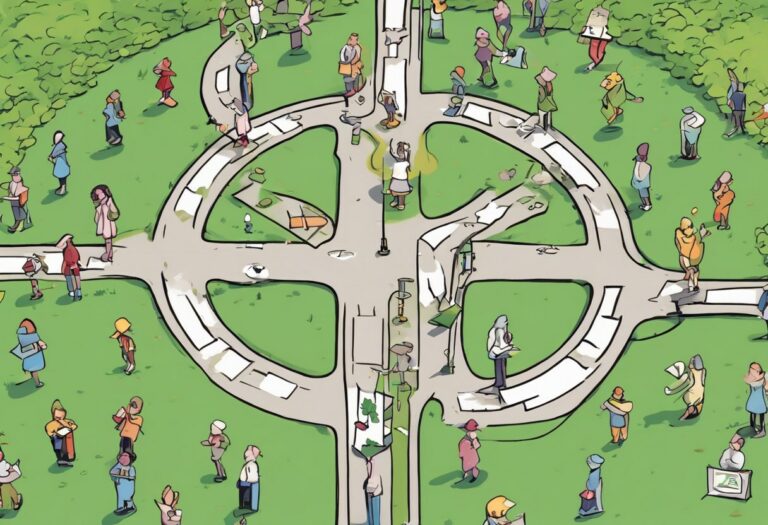12 Synonyms for “Please Let Me Know the Next Steps” in an Email

In emails, especially at work, it’s important to know how to ask about the next steps in a professional way. However, using the same phrase over and over can become repetitive.
This article lists twelve different ways to say “Please let me know the next steps,” offering alternatives to match various tones, from formal to informal. Each alternative is explained in detail, including when to use it, and is accompanied by an example.
Is It Professional to Say “Please Let Me Know the Next Steps”?
Yes, saying “Please let me know the next steps” is often seen as professional, formal, and polite. It’s a clear way to show you’re interested in proceeding with a project or discussion and need further guidance. This phrase works well in various settings, especially in work-related emails where you’re seeking direction on how to move forward. It’s useful when you’ve wrapped up an initial task or conversation and are ready for what comes next but aren’t exactly sure what that is.
For instance, after presenting a project update, you might want to know if there’s anything else to do. Or, after a job interview, you may use this phrase to express eagerness to learn about the following stages in the hiring process.
Here’s how it could look in an email:
Hello Team, Thank you for the detailed feedback on the project proposal. I believe I have a clear understanding of your suggestions and am eager to make the necessary adjustments. Please let me know the next steps so we can proceed accordingly. Best regards, Emily
Now let’s talk about why this phrase is used so often:
Pros:
- It clearly requests further instructions or information.
- Shows you’re proactive and interested in moving forward.
- Keeps the communication channel open between you and the receiver.
Cons:
- Can be seen as too passive in situations where you could propose the next steps yourself.
- May imply you haven’t taken full initiative to understand the project or context, especially if next steps were already mentioned.
Even though “Please let me know the next steps” is a great phrase to use, you may sometimes seek alternatives to avoid repetition, especially if you are frequently communicating with the same person or group. Moreover, depending on the context, an alternative phrase might offer a more specific or assertive tone, which could align better with your intention or the dynamics of the ongoing project.
12 Other Ways to Say “Please Let Me Know the Next Steps” in an Email
Looking for different ways to ask about the next steps? Here are twelve professional alternatives.
- What are our next steps?
- Could you provide the next steps?
- Please advise on the next steps.
- What should we do next?
- I would appreciate your guidance on the next steps.
- What comes next?
- What do we need to do to move things forward?
- What is the next course of action?
- I’m eager to hear about our next steps.
- What would you recommend as the next steps?
- What do we do now?
- How do we proceed?
1. What are our next steps?
This alternative is more collaborative than the original phrase, suggesting that the sender and the recipient will work together on the next steps. It sounds very professional and polite, and helps to create a sense of teamwork.
This version is better suited for scenarios where decisions or actions need to be made in partnership. It implies both parties have a stake in the outcome and encourages a collaborative approach.
Here’s a sample message using this alternative:
Greetings, Thanks for the productive meeting earlier. What are our next steps? Looking forward to pushing this project forward together. Best, Thomas
2. Could you provide the next steps?
This alternative sounds a bit more formal and is a direct request for information. It’s great for situations where the sender is slightly less familiar with the recipient.
This option is excellent when you’re seeking clarity and wish to respectfully ask for detailed instructions from someone with more knowledge or authority on the matter.
Here is a quick example for clarity:
Hello, Thank you for sharing your insights on the issue we discussed. Could you provide the next steps? I’m keen to move forward with your advice. Regards, Samantha
3. Please advise on the next steps.
This phrase is quite formal and professional, specifically requesting expert advice or guidance. It shows deference to the recipient’s expertise.
It’s particularly useful in situations where the sender is unsure and needs explicit instructions or recommendations from someone with more experience or decision-making power.
Here’s a sample email:
Dear Team, Following our review today, Please advise on the next steps. Your expert input is essential for our project's success. Warmest regards, Olivia
4. What should we do next?
This phrase is more informal and straightforward, making it suitable for conversations with colleagues or in a less formal context. It still maintains a level of politeness.
It’s a good choice when the path forward isn’t clear but you’re in a friendly rapport with the email recipient. This could be within tight-knit teams or when you’re seeking input from peers rather than superiors.
And here’s how you might use this one in an email:
Hi everyone, Great work on hitting our targets this month! What should we do next? I’m excited to hear your ideas. Cheers, Jordan
5. I would appreciate your guidance on the next steps.
This alternative is extremely polite and formal, indicating a high level of respect for the recipient’s opinion. It’s a wonderful way to request further directions without assuming any next steps.
This phrase works well when you’re dealing with someone in a position of authority or when you genuinely need detailed guidance to proceed.
Here’s a sample use in an email:
Hello Dr. Wilson, The initial research phase has been completed as planned. I would appreciate your guidance on the next steps. Your expertise is invaluable to our progress. Best wishes, Elena
6. What comes next?
This is a short, informal synonym that’s direct and to the point. It’s less formal but still remains polite when used in the right context.
Use this when you have a casual working relationship with your colleagues or when the environment allows for more direct communication. It’s perfect for quick, informal updates or check-ins.
Example email:
Hey team, Quick check-in: What comes next? Let’s keep the momentum going! Best, Alex
7. What do we need to do to move things forward?
This alternative is very professional and emphasizes action and progression. It’s ideal for motivating the team or ensuring that everyone is focused on the next goals.
It’s great for team leaders or project managers who want to encourage their team to think about future steps and how they can contribute to moving the project forward.
Check out this sample email:
Dear Team, Following our successful launch, what do we need to do to move things forward? I’m looking forward to hearing your action plans. Sincerely, Rebecca
8. What is the next course of action?
This alternative is more formal and precise compared to the original phrase. It directly asks for a plan or decision without assuming familiarity or informality. This phrase is particularly suitable in professional settings where clarity and directness are valued. It implies that you’re ready to move forward and just need directions on how to do so.
When the context requires clear, straightforward communication, especially in formal or professional emails, this alternative shines. It’s best used in situations where you are relatively new to the project or when communicating with higher-ups who expect direct questions.
Here’s an example of how to use it in an email:
Dear Mr. Thompson, I hope this message finds you well. Following our recent meeting, I've completed the initial draft of the project plan. What is the next course of action? I'm ready to make any necessary adjustments before we proceed to the next phase. Best regards, Emily
9. I’m eager to hear about our next steps.
This phrase is slightly more informal and conveys enthusiasm. It’s softer and less direct than the original, making it great for messages where you want to express eagerness or positive anticipation. It subtly asks for guidance while highlighting your readiness and excitement to continue.
It’s particularly fitting when you’ve established a comfortable rapport with your email recipient. This alternative works well in less formal contexts or when you wish to convey your enthusiasm and commitment to the project or task at hand.
Here’s a sample of this phrase in use:
Hi Laura, Thank you for the insightful conversation yesterday. I found our discussion incredibly motivating, and I'm eager to push our project to the next phase. I'm eager to hear about our next steps. Please share your thoughts when you have a moment. Warm regards, Alex
10. What would you recommend as the next steps?
This synonym puts the decision-making on the recipient in a polite and respectful manner. It’s ideal for situations where the recipient’s expertise or authority is being acknowledged. It’s more formal than simply asking what to do next, as it also shows deference to the recipient’s judgment.
When you’re unsure about the best course of action or when the next steps depend on the expertise or preference of your email recipient, this alternative is particularly useful. It’s also effective in collaborative environments where decisions are made collectively but led by one or a few individuals.
Here’s how you might use it in an email:
Dear Dr. Patel, Following our review of the recent lab results, I believe we're at a critical juncture in our research. What would you recommend as the next steps? Your guidance will be invaluable as we navigate the upcoming challenges. Sincerely, Jordan
11. What do we do now?
This option is more informal and direct, suitable for conversations where there’s already a level of comfort and familiarity. It suggests a readiness to proceed but lacks the formal tone typically expected in professional settings. This makes it perfect for internal team communications or when you’re working closely with someone.
Use this phrase when the setting is casual, and you have an established relationship with your email recipient. It’s ideal for quick, to-the-point communications within teams or with colleagues you interact with regularly.
Here’s an example:
Hi Sam, Thanks for sending over the updated client list. What do we do now? Let’s figure out our strategy for the outreach campaign. Cheers, Mia
12. How do we proceed?
This alternative is a bit more formal than “What do we do now?” but still maintains a level of politeness and inclusivity. It suggests a collaborative approach and is suitable for both formal and informal situations. It’s great for when you’re part of a team and looking to move forward together.
This phrase is effective when you’re working on a project with a group and you want to emphasize teamwork and collective decision-making. It’s also suitable when you want to be polite but are seeking clear guidance on how to continue.
Here’s an email example:
Hello Team, Following our successful product launch, we need to plan our next steps carefully to maintain our momentum. How do we proceed? I look forward to hearing your ideas and suggestions at our next meeting. Best, Raj
Final Thoughts
Finding the right way to ask about the next steps in an email can make a big difference. By choosing from the twelve alternatives provided, you can keep your emails fresh and engaging, while also showing respect and professionalism. Whether you need a formal or an informal tone, there’s an option for every situation.






